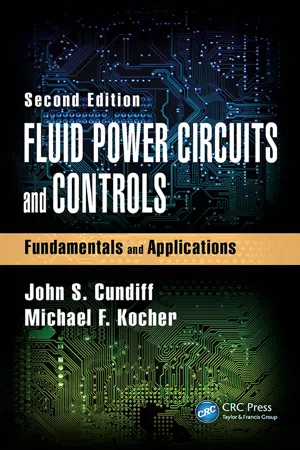
Fluid Power Circuits and Controls
Fundamentals and Applications, Second Edition
- 532 pages
- English
- ePUB (mobile friendly)
- Available on iOS & Android
Fluid Power Circuits and Controls
Fundamentals and Applications, Second Edition
About This Book
Fluid Power Circuits and Controls: Fundamentals and Applications, Second Edition, is designed for a first course in fluid power for undergraduate engineering students. After an introduction to the design and function of components, students apply what they've learned and consider how the component operating characteristics interact with the rest of the circuit. The Second Edition offers many new worked examples and additional exercises and problems in each chapter. Half of these new problems involve the basic analysis of specific elements, and the rest are design-oriented, emphasizing the analysis of system performance. The envisioned course does not require a controls course as a prerequisite; however, it does lay a foundation for understanding the extraordinary productivity and accuracy that can be achieved when control engineers and fluid power engineers work as a team on a fluid power design problem. A complete solutions manual is available for qualified adopting instructors.
Frequently asked questions
Information
1 Brief Overview of Fluid Power
1.1 Introduction
1.2 Concept of Fluid Power
1.2.1 Basic Circuits
Table of contents
- Cover
- Half Title
- Series Page
- Title Page
- Copyright Page
- Dedication Page
- Table of Contents
- Preface
- Appreciation
- Authors
- Chapter 1 Brief Overview of Fluid Power
- Chapter 2 Fluid Power Basics
- Chapter 3 Pressure Control
- Chapter 4 Creation and Control of Fluid Flow
- Chapter 5 Rotary Actuators
- Chapter 6 Hydrostatic Transmissions
- Chapter 7 Linear Actuators
- Chapter 8 Temperature and Contamination Control
- Chapter 9 Auxiliary Components
- Chapter 10 Pneumatics
- Chapter 11 Proportional Valves
- Chapter 12 Servo Valves
- Index